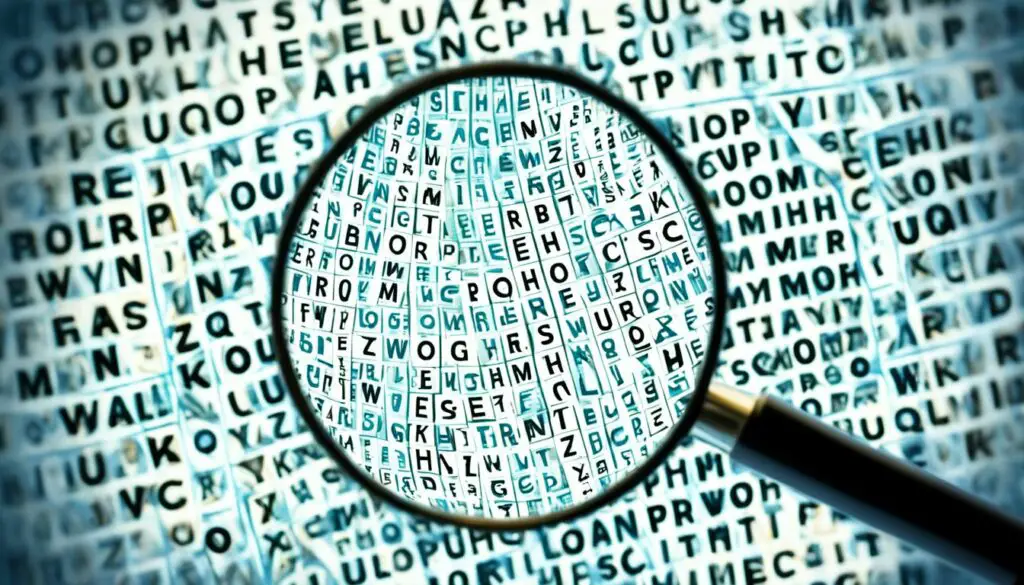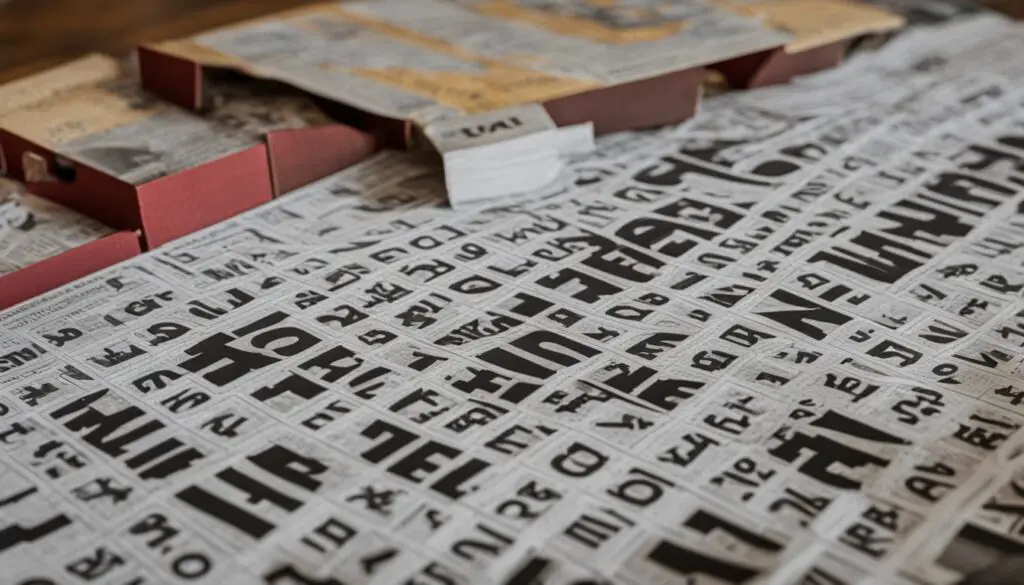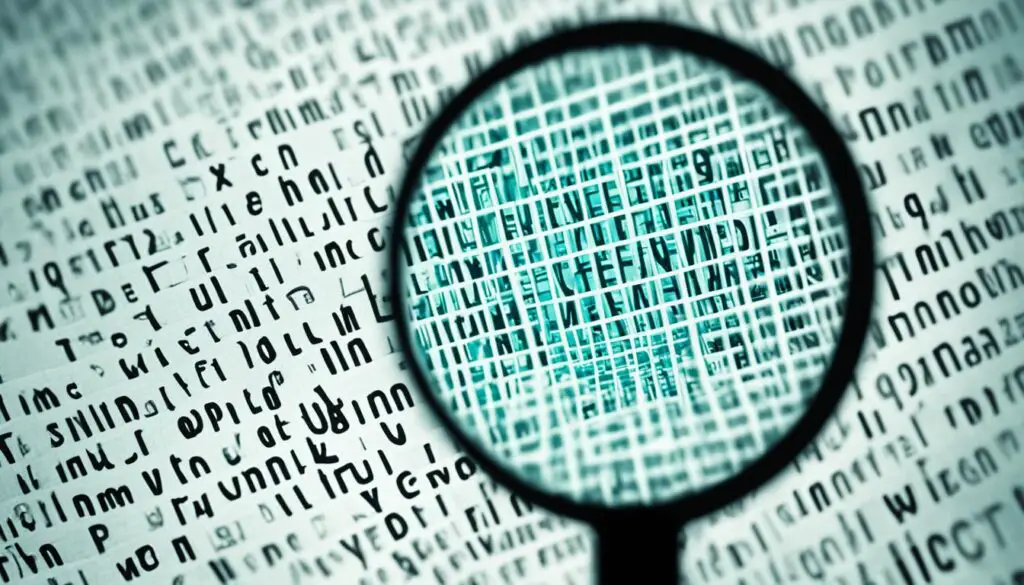Unlocking Word Searches: Strategies for Finding Hidden Words
Word searches are a loved puzzle for all ages. They’re found in many places like newspapers, magazines, and the internet. This piece will reveal tips to up your word search game. We’ll start with easy words and move on to advanced scanning methods. You’ll learn how word length, letter frequencies, and clues play a big role.

Key Takeaways:
- Starting with easy and obvious words helps create clear sections of the puzzle grid.
- Utilize systematic scanning techniques such as horizontal, vertical, diagonal, and backward scanning.
- Contextual clues and knowledge of word associations enhance puzzle-solving efficiency.
- Combining scanning techniques with contextual clues and word associations increases the chances of finding hidden words.
- Practice solving a variety of word search puzzles to further improve your skills and enjoy the process.
Starting with the Easy and Obvious Words
When tackling a word search puzzle, starting with a clear strategy is key. Begin by looking for the easy and obvious words. These words are usually short or have unique letters. They jump right out at you in the puzzle grid.
Marking these words first helps you break down the puzzle visually. You can see the solved words from the unsolved ones. This simple step makes it easier to focus and find the rest of the words.
Starting with easy words gets you moving forward quickly. It also helps you get better at solving problems. By finding and crossing off these words, you learn how word search puzzles are set up. You also pick up tips on handling tough ones.
To find these words easily, train your brain to spot them. Look for complete words, parts of words that connect to others, or familiar letters. With easy words found, you can then tackle the harder ones more effectively.

Over time, starting with the easy words will improve your puzzle solving. It builds a strong base for dealing with harder puzzles. So, welcome the challenge, hone your observation skills, and confidently find the hidden words.
Utilizing Systematic Scanning Techniques
I use many scanning methods to solve word searches quickly. These ways help me search the entire grid for words. They also up my chances of spotting hidden words. I’ll share some top strategies with you.
Horizontal Scanning
I always start at the grid’s left side and check each row from left to right. This method helps me look at all word placements in rows systematically.
Vertical Scanning
Vertical scanning is just like horizontal. I look at each column from the top down. It lets me find words not seen in horizontal scanning.
Diagonal Scanning
For diagonal scanning, I look for words moving on a slant. I usually start at the top left and go to the bottom right or bottom left. I find words that other methods might miss.
Backward Scanning
Searching backward is important too. It’s the same as the other techniques but in reverse. This way, I catch words written backward.
Using these methods together lets me search the entire grid well. This makes finding hidden words easier. Here’s how I tackle a puzzle:
| Word | Horizontal Scan | Vertical Scan | Diagonal Scan | Backward Scan |
|---|---|---|---|---|
| Systematic | HSYSTEMATIC | SYSTEMATIC | SYTEMATIC | CITEMATYS |
| Scanning | SCANNING | SCANNING | NGN | GNINNACS |
In the example above, I used the techniques to find “Systematic” and “Scanning.” I also found the letter “S” and the words “Citematys” and “Gninnacs.”
By practicing these systematic scanning techniques, you’ll get better at word searches. You’ll quickly spot hidden words.

Employing Contextual Clues and Knowledge of Word Associations
When tackling word search puzzles, using contextual clues and word associations proves very helpful. They boost your ability to solve puzzles. By adding depth to your approach, these aids reveal the puzzle’s theme and the hidden words within.
Contextual clues are clues in the puzzle itself that lead you to words on a certain topic. Take a sports puzzle, for instance. You might find words like “ball,” “team,” or “score.” By noting these clues, your search for hidden words becomes more efficient.
Another strategy that works well is tapping into your knowledge of word associations. Our minds often link words and phrases that belong together. This lets you guess intelligently and discover puzzle words faster. It also makes the solving process more engaging.
By mixing these strategies with a system for scanning, you can boost your puzzle-solving speed. So, next time you face a word search, take a moment to understand the puzzle’s context. Apply your association knowledge. You’ll be surprised at how these methods improve your puzzle-solving and add to the fun of finding words!
